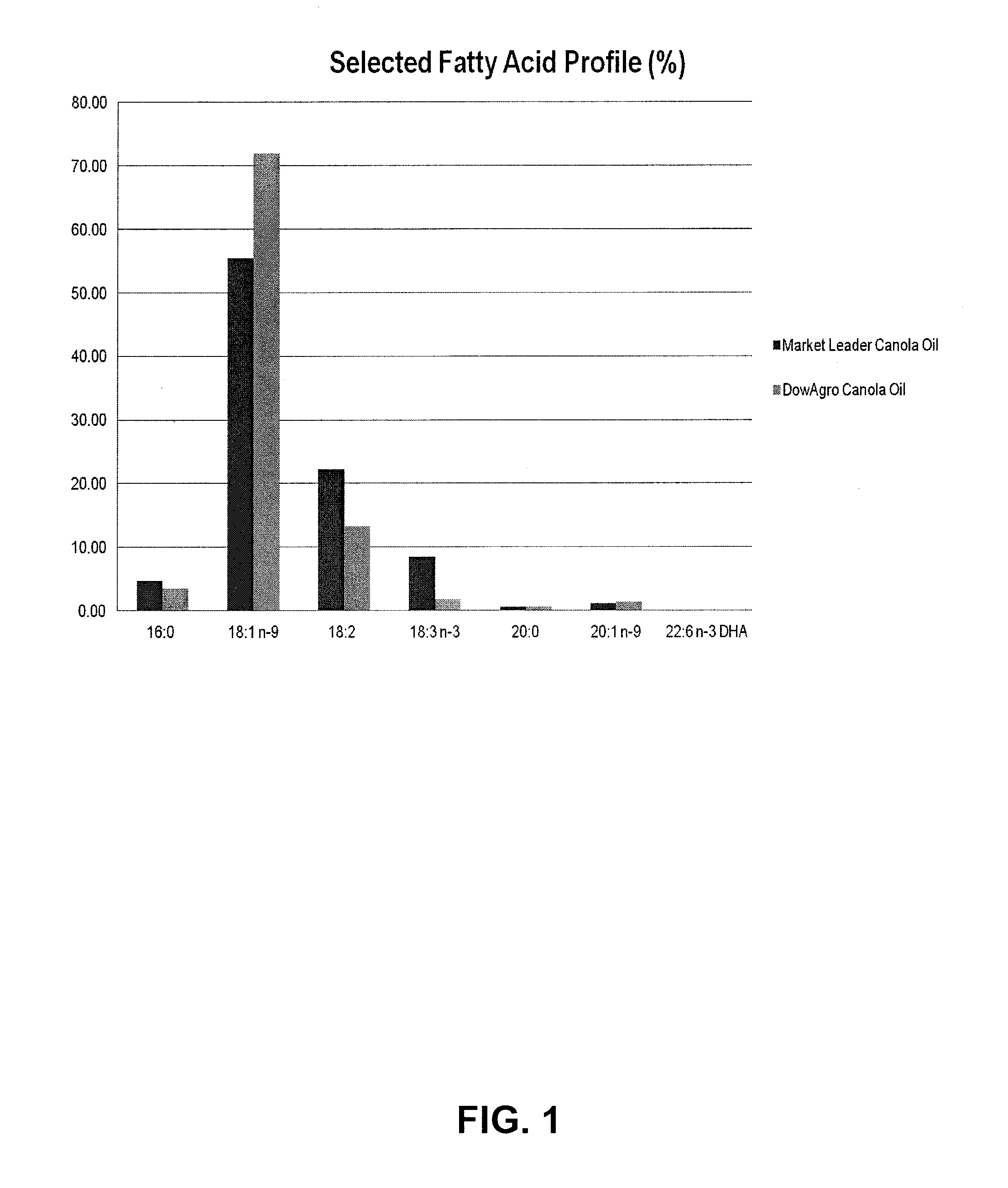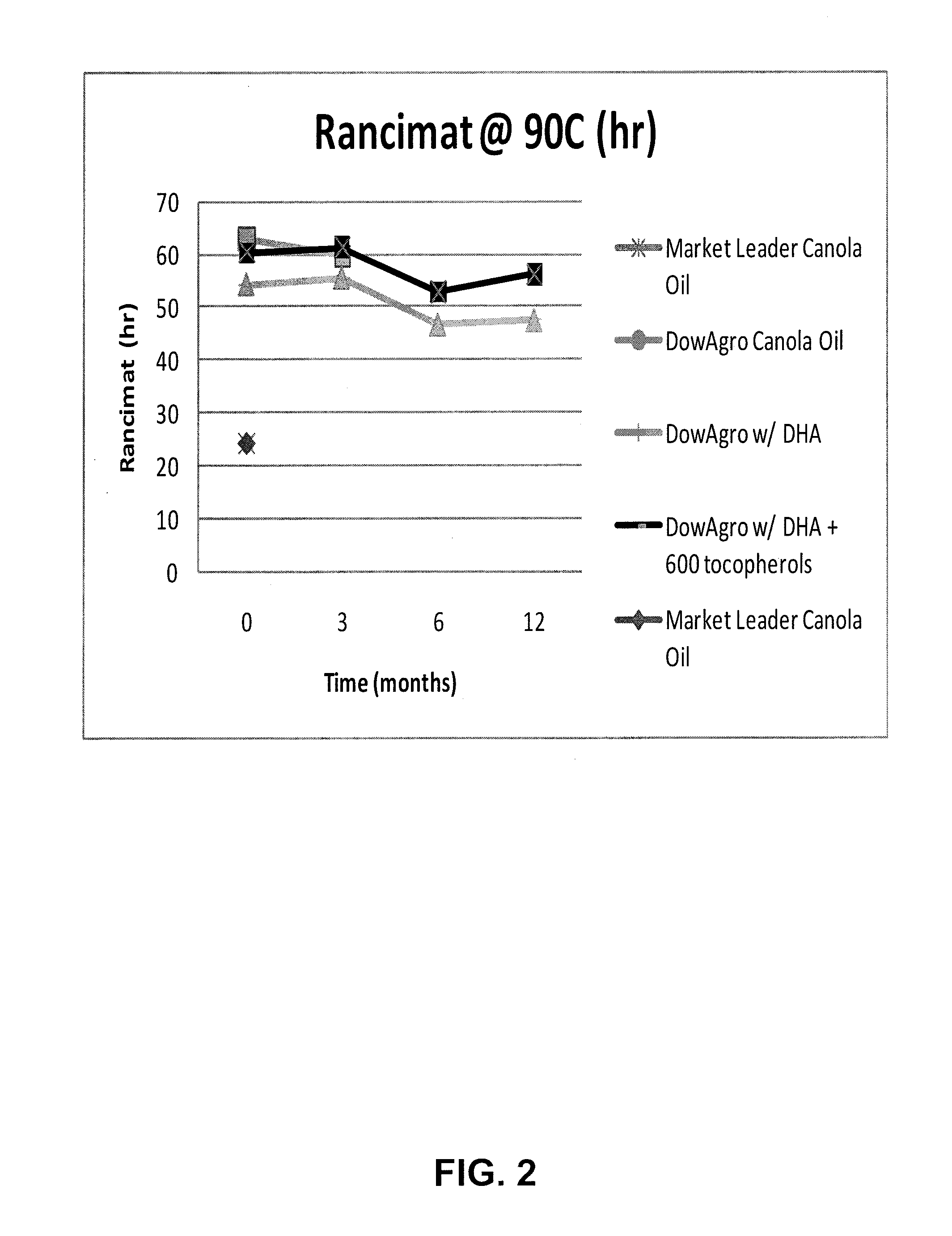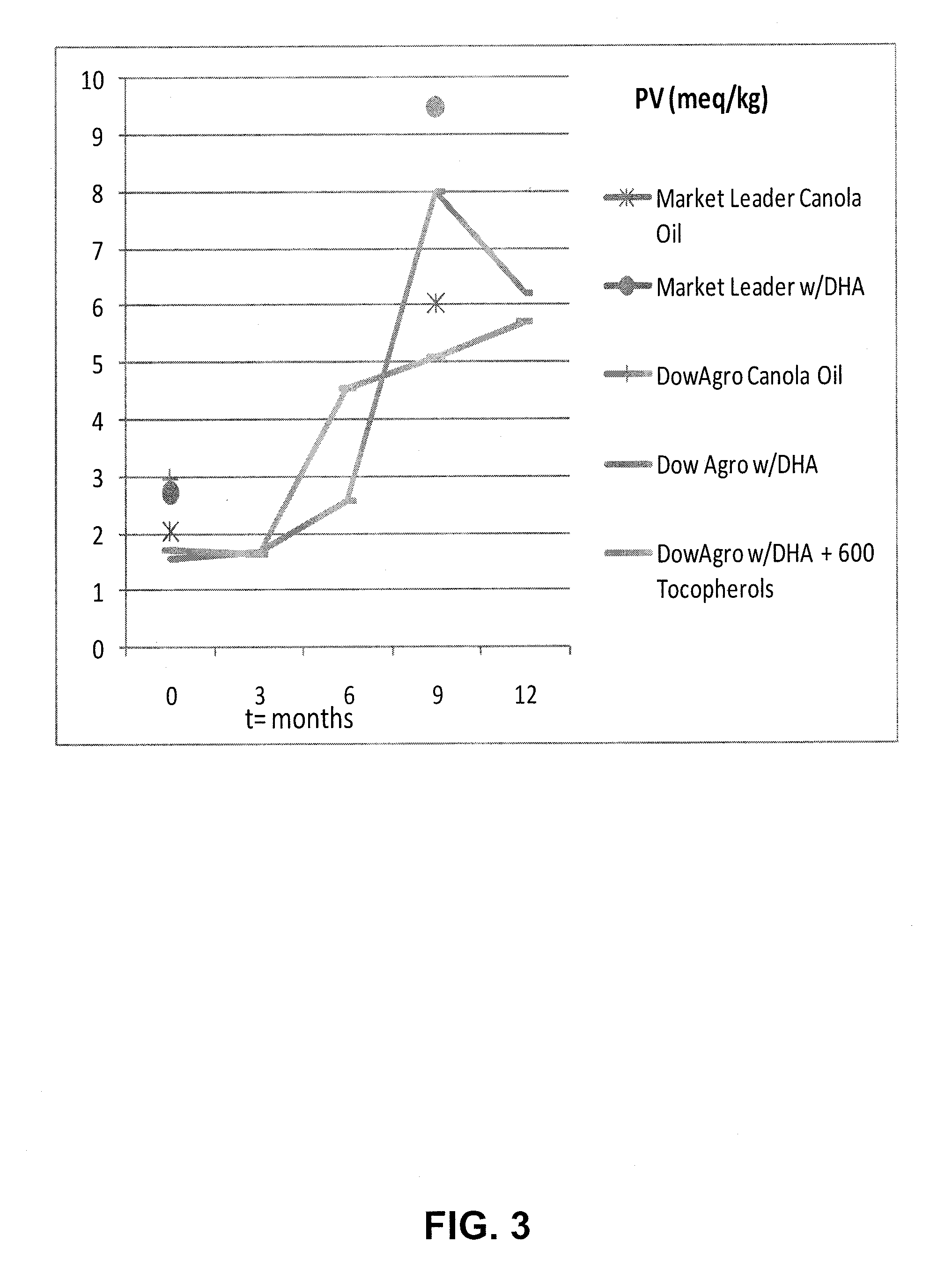Omega-9 canola oil blended with DHA
a technology of dha and canola oil, applied in the direction of fatty substance production, fatty substance preservation using additives, edible oils/fats, etc., can solve the problems of reducing the marketable value of oil, shortened operation times, and other limitations of the related art, and achieves the effect of increasing oxidative stability
- Summary
- Abstract
- Description
- Claims
- Application Information
AI Technical Summary
Benefits of technology
Problems solved by technology
Method used
Image
Examples
example 1
Blending of Oil
[0041]Oil blends were prepared on a weight basis. Market leader canola oil was obtained from POS Pilot Plant (Saskatoon, SK, Canada). DowAgro canola oil was obtained from Richardson International (Winnipeg, MB, Canada). Samples were prepared by blending approximately 50 g of DowAgro canola oil or market leader canola oil with DHA stock oil (Martek, Columbia, Md.) having a known content of DHA. The DHA stock oil was added to final concentrations of 0.5% or 1.0% for both DowAgro canola oil and market leader canola oil. In addition, DHA stock oil containing antioxidants (600 ppm of tocopherol) was added in some samples. Antioxidants were added to final concentrations of 1.0% or 0.5% for both DowAgro canola oil and market leader canola oil. Blended oils were stirred until uniform. The blends were stored in a gravity convection oven set at 50° C. Approximately 10 g aliquots were taken every 2 weeks and stored frozen until the different analysis described below were perform...
example 2
Fatty Acid Methyl Esterase (FAME) Analysis of Oils
[0042]Experimental oil blends were analyzed for fatty acid content using the FAME method described in AOCS method Ce 2-66 (Preparation of Methyl Esters of Fatty Acids: Ce2-66(97). Official Methods and Recommended Practices of the AOCS, Fifth Edition—First Printing (including all changes 1993-1997); Dr. David Firestone—Editor: American Oil Chemist's Society, Champaign, Ill.). Oil samples were diluted to 20 mg oil / mL in heptane. Forty microliters (40 μl) of 1% sodium methoxide in methanol was added to each sample, vortexed, and incubated for 60 minutes at room temperature. One microliter (1 μl) of the resulting mixture was then injected on an Agilent 6890 GC™ equipped with a flame ionization detector (FID). Methyl ester reference standards were purchased from Nu-Chek-Prep, Inc. and used to identify the fatty acid peaks in each oil sample diluted to the same concentration as the samples (Nu-Chek Prep Inc.). The column used was a DB-23, ...
example 3
RANCIMAT™ Study to Determine Oxidative Stability Index (OSI)
[0043]Aliquots of selected canola oil compositions were analyzed on a RANCIMAT™ (Metrohm, Herisau, Switzerland) at 110° C., following manufacturer's instructions. Three gram (3 g) aliquots of each oil sample were placed into labeled reaction vessels and an air inlet and cap was inserted into each vial. Collection vessels were filled with 70 mL of MILLI-Q™ water and placed onto the RANCIMAT™, and tubing was attached from the reaction vessel to the collection vessel. Once the temperature of 110° C. was reached, vials were inserted into the heat block and an air flow of 20 mL / min was initiated. The RANCIMAT™ method monitors the increase in conductivity in the collection vessels, and determines the oxidative stability index (OSI) breakpoint of the oil from the inflection point of the conductivity curve. Calculated OSI's at 110° C. are reported in Table 3.
TABLE 3Oxidative Stability Index of canola oil samplesdetermined by RANCIM...
PUM
 Login to View More
Login to View More Abstract
Description
Claims
Application Information
 Login to View More
Login to View More - R&D
- Intellectual Property
- Life Sciences
- Materials
- Tech Scout
- Unparalleled Data Quality
- Higher Quality Content
- 60% Fewer Hallucinations
Browse by: Latest US Patents, China's latest patents, Technical Efficacy Thesaurus, Application Domain, Technology Topic, Popular Technical Reports.
© 2025 PatSnap. All rights reserved.Legal|Privacy policy|Modern Slavery Act Transparency Statement|Sitemap|About US| Contact US: help@patsnap.com



